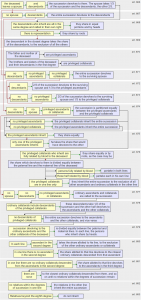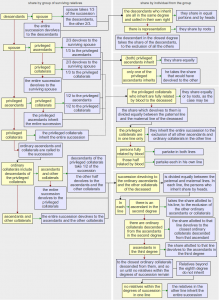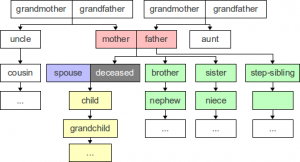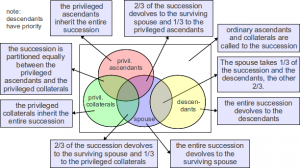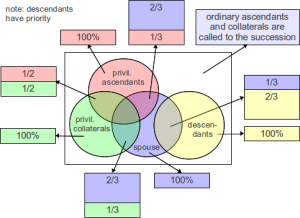Voici le premier set de diagrammes en français, portant sur l’autorisation aux soins. Le code civil énonce le principe voulant que nul ne puisse porter atteinte à l’intégrité de la personne sans son consentement. Les soins médicaux constituent une atteinte. Il est donc nécessaire d’encadrer l’obtention du consentement.
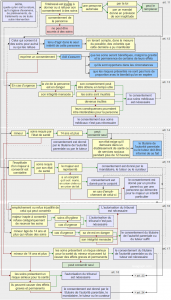 Nous présentons ici 2 versions des articles 10 à 18 du CCQ portant sur le consentement aux soins.
Nous présentons ici 2 versions des articles 10 à 18 du CCQ portant sur le consentement aux soins.
Le premier diagramme présente les articles selon l’ordre et la structure du code.
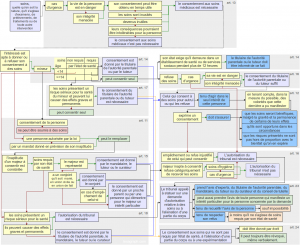 Le deuxième diagramme reprend le style des deux colonnes (voir billet précédent). La colonne de gauche présente les règles concernant qui peut consentir, et la colonne de droite contient les modalités s’appliquant au consentement.
Le deuxième diagramme reprend le style des deux colonnes (voir billet précédent). La colonne de gauche présente les règles concernant qui peut consentir, et la colonne de droite contient les modalités s’appliquant au consentement.
*** *** ***
This new set of diagrams are on consent to medical care. The Civil Code sets down the principle whereby no one may violate a person’s physical integrity without consent. Medical care are considered a violation, so it is necessary to get a person’s consent before providing care.
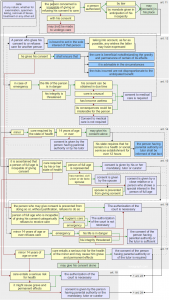 We have here 2 versions of articles 10 to 18 of the Civil Code of Qc, which are on consent to care.
We have here 2 versions of articles 10 to 18 of the Civil Code of Qc, which are on consent to care.
The first diagram is a straightforward visualisation of the articles, closely following the CCQ’s order and structure.
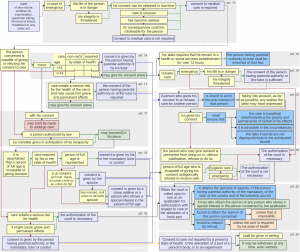 The second diagram follows the two-column system put forward in the last post. The left column contains rules on who may give consent, and the right column, the conditions that applies to the consent. I believe the two-column system helps a lot in understanding how the various rules relate to each-other.
The second diagram follows the two-column system put forward in the last post. The left column contains rules on who may give consent, and the right column, the conditions that applies to the consent. I believe the two-column system helps a lot in understanding how the various rules relate to each-other.




